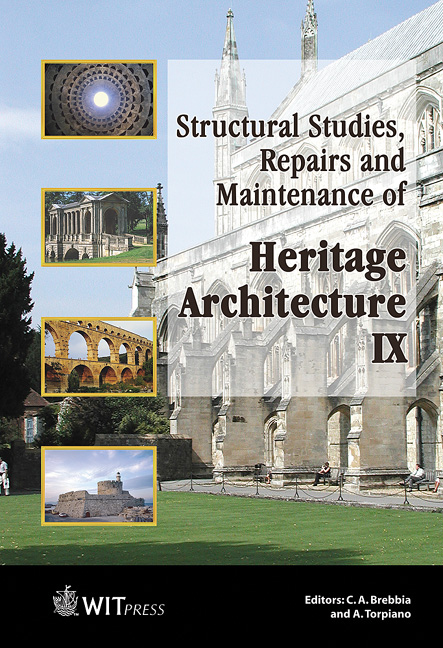Recovery And Maintenance Of The Building Complex Used For Tobacco Manufacture In Cava De' Tirreni
Price
Free (open access)
Transaction
Volume
83
Pages
10
Published
2005
Size
1,482 kb
Paper DOI
10.2495/STR050501
Copyright
WIT Press
Author(s)
S. De Medici, K. Fabbricatti, S. Oppido, M. R. Pinto & A. Bianchi
Abstract
The case of the tobacco manufacturing site in Cava de’ Tirreni (Sa) will be analysed to describe the complexity of intervention choices for buildings in which there has to be a change in the use destination; its new destination will be the settling of a pole of the Faculty of Architecture, University of Naples \“Federico II” and of activities connected to a sustainable tourism promotion. The building was built as a patrician house (1524), it then changed different use destinations, until 1912 when it was transformed to an industrial site, specifically in tobacco manufacturing which today still represents the building’s prevailing feature. The actual configuration derives from relevant interventions in the 1900s for the manufacturing activities’ need and is distinguished by the introduction of new techniques and new materials; because of all of these features the site is an example of industrial archaeology. The definition of reuse interventions requires the preservation of relationships within the pre-industrial building as it was shaped after the changes in the 1900s, to guarantee the preservation of evidence of different ages’ material culture and maintenance related to the new use. The proposed contribution defines guidelines for the planning of the interventions that have to be carried out, when processing the reuse project for a building, in which the need to govern and at the same time the choice of materials and traditional building techniques is connected to the durability prevision and the behaviour of a building system subject to new use. Keywords: sustainable reuse, maintenance, technological features, industrial architecture, pre-industrial buildings.
Keywords
sustainable reuse, maintenance, technological features, industrial architecture, pre-industrial buildings.




